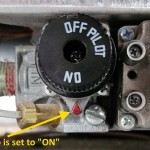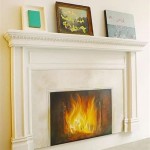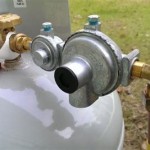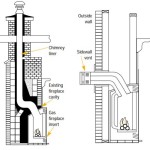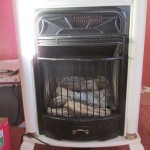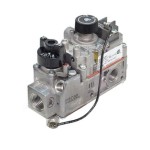Elevating Your Home's Ambiance: A Guide to Fireplace Mantel Designs
The fireplace, often the focal point of a living room or den, offers not only warmth but also a significant design opportunity. The mantel, specifically, serves as a key architectural element capable of enhancing the overall aesthetic appeal of a space. Choosing the right fireplace mantel design requires careful consideration of various factors, including the existing architectural style, the desired ambiance, material preferences, and functional requirements. This article explores a range of fireplace mantel designs, offering insights into their characteristics and suitability for different home settings.
Understanding Architectural Styles and Mantel Compatibility
The first step in selecting a fireplace mantel is to assess the architectural style of the home. A mantel that clashes with the existing architectural language will detract from, rather than enhance, the room's overall design. Different architectural styles lend themselves to specific mantel designs and materials.
For example, a traditional or Victorian-style home often benefits from an ornate mantel crafted from wood, featuring intricate carvings, corbels, and possibly even marble inlays. These mantels typically boast a substantial presence and contribute to the grandeur associated with these architectural periods. Common wood types include mahogany, cherry, and oak, often stained to highlight their rich colors and grain patterns.
Conversely, a modern or contemporary home typically calls for a simpler, more streamlined mantel design. Clean lines, minimalist detailing, and the absence of excessive ornamentation are defining characteristics. Materials like concrete, metal, and sleek, unstained wood are frequently employed. The focus is on achieving a sense of understated elegance and allowing the fireplace itself to be the primary point of interest. Floating mantels, which appear to be suspended from the wall, are particularly popular in modern settings.
A craftsman or bungalow-style home often favors a mantel design that emphasizes natural materials and handcrafted details. Wood, particularly hardwoods like walnut and maple, is commonly used, and the design may incorporate elements such as exposed joinery, simple geometric patterns, and a warm, inviting aesthetic. The goal is to create a sense of comfort and connection to nature.
Transitional designs, which blend elements of both traditional and modern styles, offer more flexibility in mantel selection. A transitional mantel might incorporate clean lines and a minimalist profile but feature a slightly more ornate detail, such as a subtly carved corbel or a richly stained finish. The key is to strike a balance between the two styles, creating a cohesive and sophisticated look.
Exploring Material Options and Their Characteristics
The choice of material significantly impacts the appearance, durability, and maintenance requirements of a fireplace mantel. Each material offers a unique set of aesthetic and practical qualities.
Wood remains a classic and versatile choice, offering a wide range of finishes, colors, and textures. As mentioned previously, various wood types, such as oak, maple, cherry, and mahogany, each possess distinct grain patterns and characteristics. Wood mantels can be painted, stained, or left natural, allowing for customization to suit different design preferences. However, wood is susceptible to heat damage and requires periodic sealing or refinishing.
Stone, including materials like marble, granite, limestone, and slate, offers a sense of permanence and sophistication. Stone mantels are highly durable, heat-resistant, and relatively low-maintenance. Marble provides a luxurious aesthetic with its veining and polished surface, while limestone offers a more rustic and textured appearance. Granite is known for its durability and resistance to staining, making it a practical choice for high-traffic areas. Stone mantels can be quite heavy and require professional installation.
Concrete is an increasingly popular material for modern and contemporary mantels. It offers a minimalist, industrial aesthetic and can be cast into various shapes and sizes. Concrete mantels are durable and heat-resistant, but they may require sealing to prevent staining. The texture and color of concrete can be customized through different finishing techniques.
Metal, such as wrought iron, steel, or aluminum, provides a sleek and modern look. Metal mantels are durable, heat-resistant, and can be powder-coated in a variety of colors. Wrought iron is often used for more ornate designs, while steel and aluminum are favored for their clean lines and minimalist appeal. Metal mantels can be integrated with other materials, such as wood or glass, for a more dynamic look.
Brick is a classic material that provides a rustic and traditional aesthetic. Brick mantels are highly durable and heat-resistant, and their color and texture can vary depending on the type of brick used. Brick can be left exposed or painted to match the surrounding décor. This is often suitable for more casual or country-style interiors.
Considering Functional Requirements and Mantel Dimensions
Beyond aesthetics, the functional requirements of a fireplace mantel should also be considered. The dimensions of the mantel, the size of the fireplace opening, and the surrounding space all play a crucial role in determining the appropriate design. Different factors must be considered before installation can take place.
The size and scale of the mantel should be proportionate to the fireplace opening and the overall size of the room. A large, imposing mantel may overwhelm a small room, while a small, understated mantel may get lost in a large space. Measure the dimensions of the fireplace opening and the surrounding wall to determine the appropriate mantel size.
The height of the mantel is also important. It should be high enough to provide adequate clearance above the firebox, but not so high that it feels out of proportion. Building codes often specify minimum clearances for combustible materials near a fireplace, so it's essential to check local regulations before installing a mantel.
The depth of the mantel provides a surface for displaying decorative items, such as photographs, artwork, or candles. A deeper mantel offers more space for display, but it may also protrude further into the room. Consider the available space and the desired functionality when determining the appropriate mantel depth.
Storage options can also be incorporated into a fireplace mantel design. Built-in cabinets or shelves can provide valuable storage space for firewood, books, or other items. This is particularly useful in smaller rooms where storage is limited. When incorporating storage, ensure that the design complements the overall aesthetic of the mantel.
Wiring considerations are essential if you plan to incorporate lighting or other electrical elements into your fireplace mantel. Ensure that there are adequate electrical outlets and wiring to support the desired features. It is always recommended that a qualified electrician handle any electrical work related to the fireplace mantel.
Finally, safety considerations are paramount. Ensure that the mantel is securely attached to the wall and that all materials used are fire-resistant or treated to be fire-retardant. Regularly inspect the mantel for any signs of damage or wear and tear and address any issues promptly. A properly installed and maintained fireplace mantel can provide years of enjoyment and enhance the beauty of your home.

53 Best Fireplace Mantel Designs To Ignite Your Creativity Classic White Mantels Living Room With

10 Fireplace Mantel Decorating Ideas Full Service Chimney

11 Mantel Decor Ideas That Ll Light Up Your Living Space Architectural Digest

Mantel Decorating Tips And Ideas Jaymee Srp

20 Gorgeous Fireplace Mantel Decorating Ideas That Ll Keep You Cozy

6 Fun Design Ideas For A Custom Fireplace Mantel

35 Fireplace Mantel Ideas For A Heavenly Hearth Bored Panda
:max_bytes(150000):strip_icc()/cozy-fall-mantel-decorating-5dfcd9f83cbc45c9ab67357fe2b52b40.jpeg?strip=all)
28 Fall Mantel Decorating Ideas To Make Your Hearth More Homey

36 Fireplace Decor Ideas Modern Mantel

19 Amazing Diy Fireplace Mantel Ideas To Inspire You

